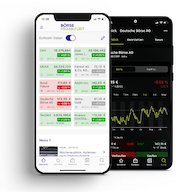Glossary
VDAX
The volatility index VDAX (formerly VDAX-NEW) expresses the range of fluctuation - the implied volatility - of the DAX index expected by the futures market: The VDAX indicates in percentage points what volatility is expected by the market for the DAX over the next 30 days.
The calculation is based on DAX option contracts with a remaining term of 30 days, which are quoted “at the money” and “out of the money”.
The VDAX-NEW was originally developed by Deutsche Börse and Goldman Sachs and introduced on April 18, 2005 as a supplement to the former VDAX.
As the volatility of a market is generally negatively correlated with its performance, it is suitable for diversifying a portfolio: if DAX prices fall, the price of the VDAX rises.
The former VDAX, which has been calculated since 1994, measured implied volatility exclusively on the basis of “at-the-money” DAX options with a remaining term of 45 days. As the VDAX-NEW covered a broader volatility surface than the former VDAX, the former VDAX was ultimately replaced by the VDAX-NEW. The calculation and distribution of the former VDAX was therefore discontinued in September 2016.
In September 2024, the VDAX-NEW was renamed VDAX.




